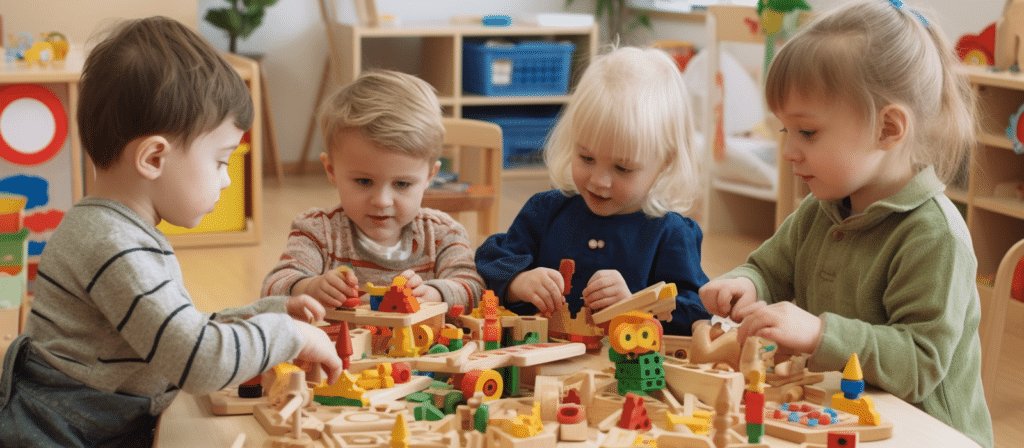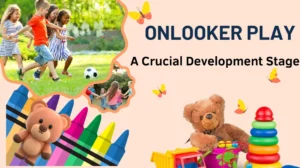In the journey of early childhood, optimal development arises from direct engagement with their surroundings, where they navigate and learn through their senses, absorbing information from the environment. Though we typically reckon five senses, our sensory palette is actually comprised of seven: sight, hearing, taste, smell, touch, vestibular, and proprioceptive. Consider the vestibular sense as your body’s navigational prowess, orchestrating balance and motion in space, while the proprioceptive sense interprets the movement and positioning of individual body parts, notably muscles and joints. Both these faculties operate subtly beneath our awareness.
Upon birth, our senses exist, yet they are not fully structured or developed. During the initial 6 to 8 years of life, our brains adeptly sieve through the influx of sensory data, deciphering elements that pose a threat or serve broader purposes. This intricate process, known as sensory integration (SI), absorbs more than 80% of our nervous system’s resources. The culmination of this integration manifests as an organized brain, shaping our perceptions, actions, and learning. If all proceeds well, as a child progresses through early primary schooling, their senses coalesce effectively, enabling them to learn, focus, and self-regulate.
However, children who struggle to manage this sensory input or those who are still navigating ongoing sensory stimulations often manifest behavioral challenges. As mentors and caretakers, we possess the capacity to assist children across various age brackets in honing and preserving their sensory well-being. Be it in educational settings or domestic environments, adults can provide the tools that promote wholesome sensory development, charting the course towards self-regulation.

Nurturing Motor Mastery
A rational starting point in nurturing SI is creating frequent opportunities for movement, particularly unstructured whole-body play, numerous times throughout the day. Nevertheless, diversifying movement prospects also holds significance. Children are instinctively inclined to run, jump, swing, climb, balance, and spin, especially in outdoor settings. They yearn to be upside down, to bounce, crawl beside walking, stretch, glide, and actively use tools like bicycles, scooters, and skates. And yes, on occasion, this might entail delving into age-appropriate risks within their active play. Why? Assessing and managing these risks imparts confidence, problem-solving skills, and resilience.
Amidst a period when many children are entwined with screens for educational purposes, parents may encounter challenges in prompting their children to tangibly interact with their environment. Allocate a dedicated time daily for your children to engage in movement, completely divorced from electronic devices. Here are a few suggestions for materials and activities that can be seamlessly incorporated at home, indoors or outdoors:
- Implement climbing ropes, tree swings, or tire swings at home for climbing, spinning, and swinging experiences.
- Employ mini trampolines, spinning toys like the Sit’n Spin, balance boards, or hopper balls to stimulate bouncing and equilibrium.
- Introduce a hanging bar or indoor swing—such as a cuddle swing, rocker, or swing chair—allowing children to expend energy and find tranquility, especially on indoor days.
- Cultivate “heavy” work with a child-sized wheelbarrow and shovel. Everyday items like two-liter bottles filled with water or an old set of encyclopedias, books, or magazines can be employed for lifting or carrying tasks. (Ensure the activity is tailored to your child’s size and capacity.)
- Craft a sensory table using dishpans, housing changing materials like sand, dried beans, pasta, rice, shaving cream, water, assorted beads, popcorn, shredded paper, or packing peanuts.
- Offer an array of fine-motor and art supplies, spanning diverse textures of clay or dough, vertical painting and drawing surfaces (easel or wall-mounted), and practical life pursuits such as bead stringing or transferring objects with tweezers or a spoon. Rotate these periodically.
Encourage both structured movement, encompassing activities like yoga, dance classes, sports, or obstacle courses, and unstructured active play, wherein children steer the course. Movement segments needn’t be extensive; brief “brain breaks” interspersed with other activities aid children (and parents) in regrouping their attention and re-entering activities with renewed enthusiasm.

Nurturing Personal Spaces
As educators mold classroom environments to accommodate diverse learners, you too possess the leeway to tailor your home environment to your children’s specific needs, while spanning their developmental journey over several years. Observe your living space through the lens of these environmental considerations, making subtle modifications that cater to your child(ren)’s requirements.
- Room Arrangement: Does the space facilitate variations between exuberant and tranquil activities, solo work and group engagement?
- Activity Diversity: Do children have the autonomy to choose activities, encompassing varying levels of stimulation, physical engagement (fine or gross motor, sitting or standing), and social interaction?
- Visual Organization: Are toys and materials clearly categorized and accessible sans adult intervention? Does the environment strike a balance between occupied and unoccupied space, offering visual respite? Does the lighting encompass both natural and artificial sources, spanning diverse heights and intensities? Can children partake in the upkeep of their ordered surroundings?
- Seating Considerations and Retreat Options: Do children possess an array of seating options—chairs, stools, or floor seating—tailored to their size, featuring varied textures, heights, and firmness? Does a secluded personal space exist for moments of solitude, be it for solitary pursuits, reflection, or recalibration? Is this space consistently accessible?
Irrespective of your living setup, furnishing your child with established routines, lucid expectations buttressed by age-appropriate support, and well-choreographed transitions (forewarned and reiterated, particularly for young children) furnishes a predictable structure to their day, offering them a compass to navigate. Just as adults find solace in foreknowledge, our children experience a sense of mastery when they comprehend what lies ahead. Transitions ease into a smoother rhythm when children are primed well in advance.
Fostering Personal Agency
Amid this unprecedented phase, an avenue ripe for exploration is nurturing self-reliance within our young ones. Our contemporary culture often thrusts us into ceaseless motion, leaving minimal room for leisure—both for ourselves and our children. Age-appropriate self-reliance, interwoven with responsibility, serves as a valuable asset, tightly connected to the self-regulation imperative for success in school and, ultimately, in life. The progression of both autonomy and responsibility should unfold sequentially, consistently, across a span allowing the child to steer and oversee their own pursuits.
Contemplating the cultivation of autonomy at home prompts us to reflect upon our environment and our child’s capacity to maneuver freely and with intent. Here’s where you can initiate your journey. Keep in mind that young children are













